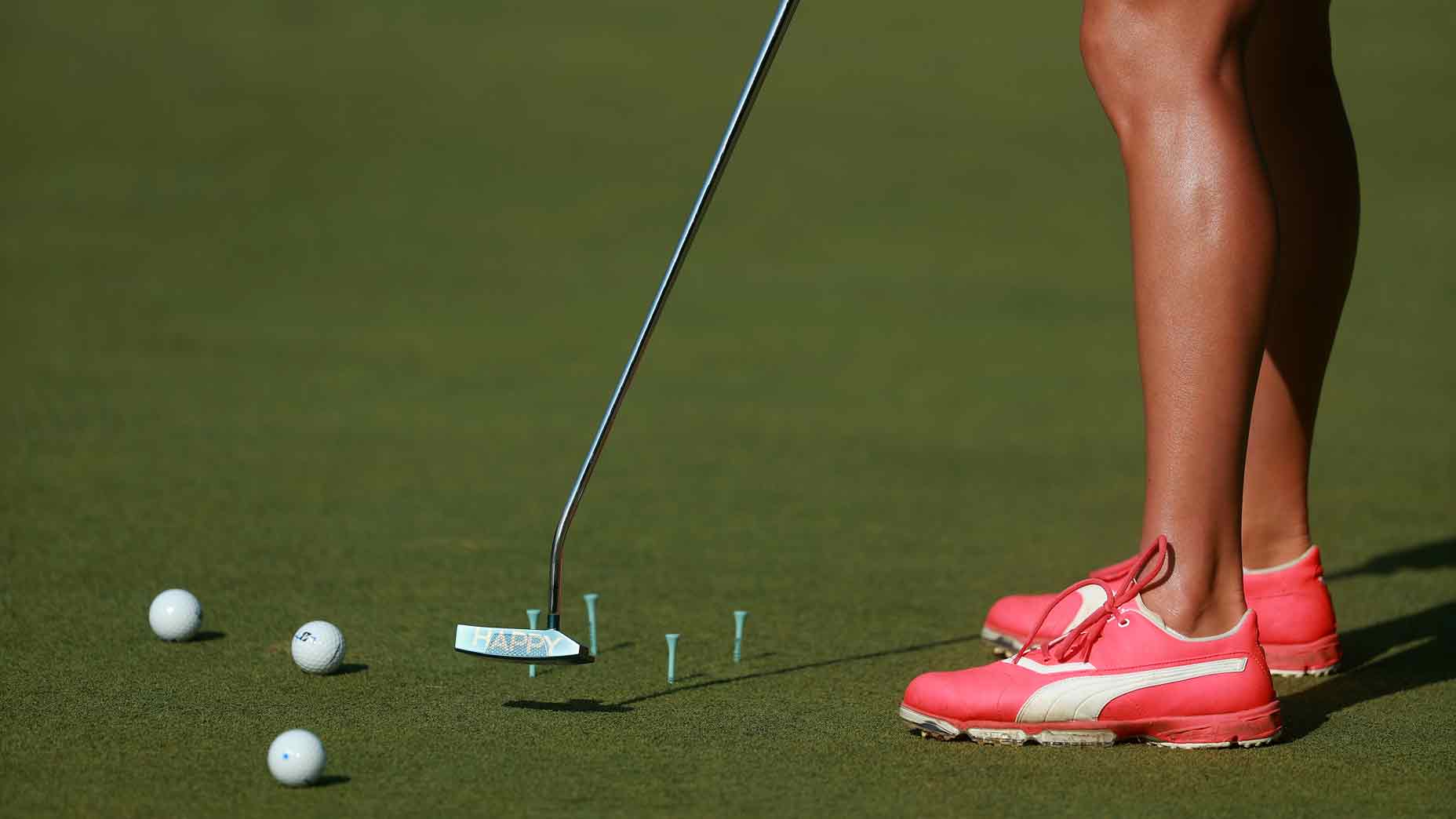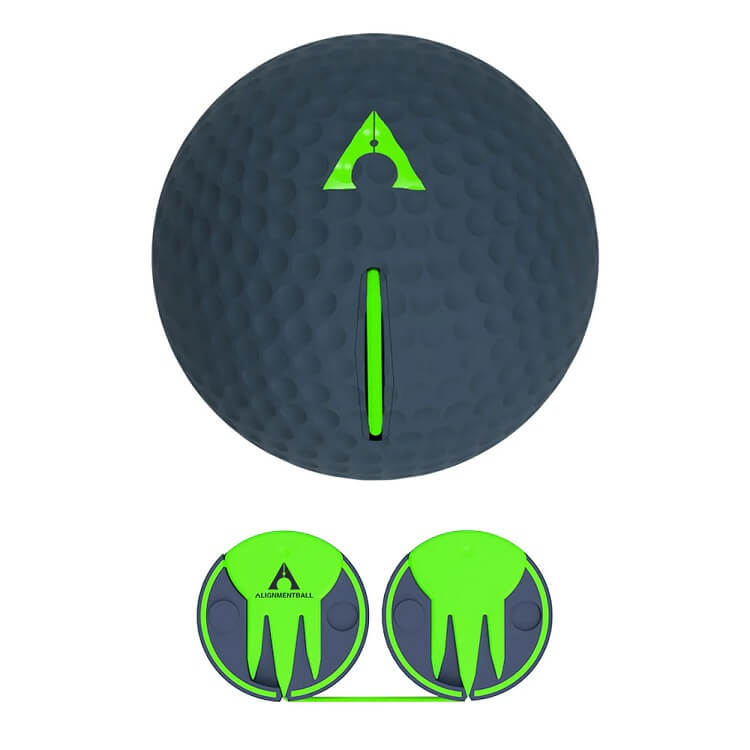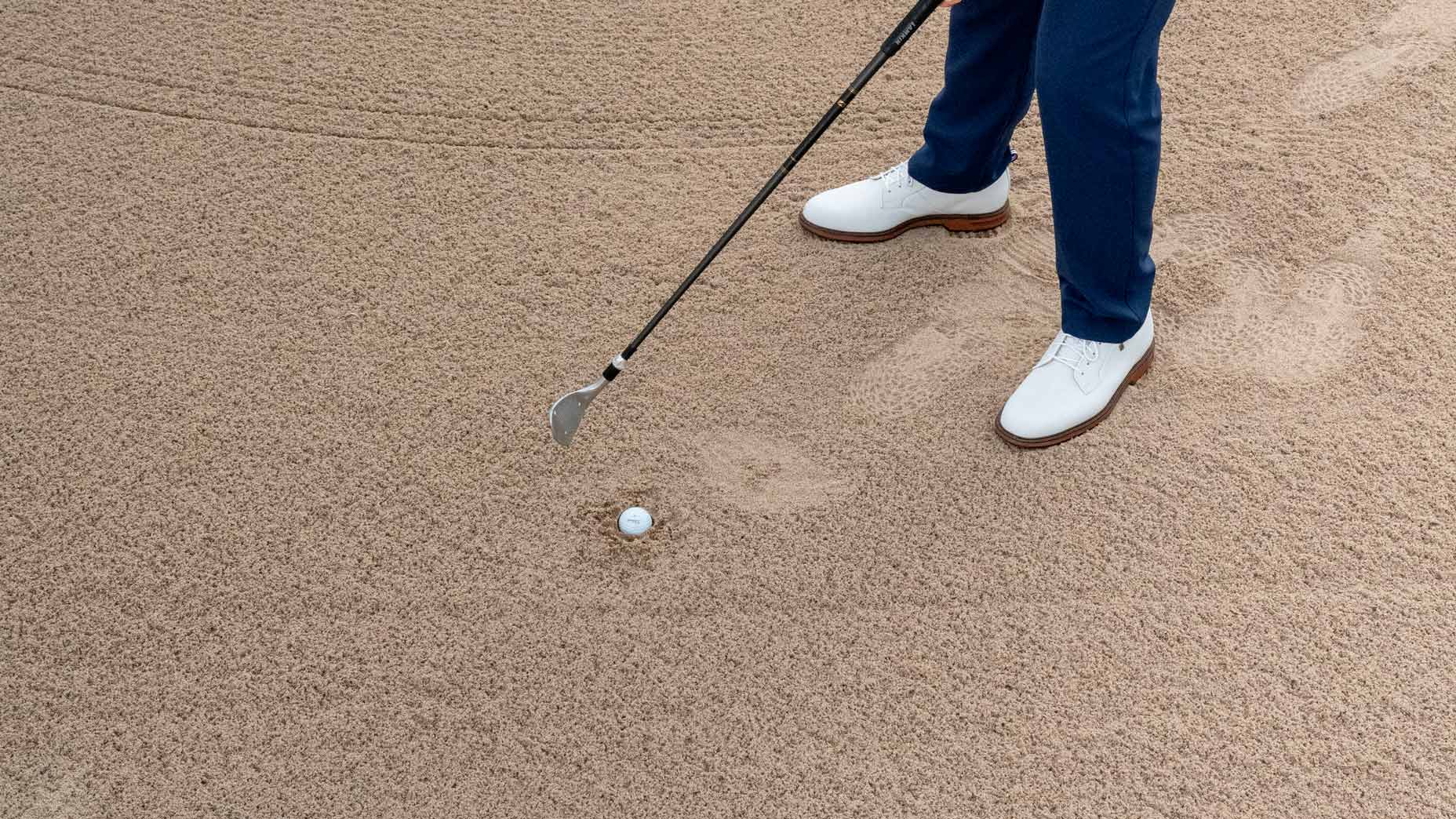10 ways to maximize your practice rounds

GOLF Top 100 Teacher Kellie Stenzel shares her favorite ways to maximize your practice rounds, ensuring you'll get the most out of it.
Getty Images
Playing a practice round, whether it’s in person or virtually, can pay huge dividends before you go play the course for an event. When you have familiarity with the holes and the challenges that each presents, you can be confident in your game plan and just focus on executing your shots.
So if you want to maximize your golf practice rounds and start seeing lower scores, take a look below at the 10 ways that can help you reach your goals quicker — and make for better, more productive rounds.
How to get the most out of your golf practice rounds
1. Putt, putt, putt!
When you’re playing a course that you’re unfamiliar with, having a good sense of the greens is so important. How the speed and break compares to what you’re used to is really helpful to understand and will give you confidence when you’re out there competing for real.
Rolling extra putts from one side of the green to the other can help develop this instinct and save you putting strokes. By doing this, you’ll get a better understanding for the slopes and speed of the greens.
If you struggle with reading greens, one of my favorite products is Golflogix Greenbooks, which provides Tour-quality green data.

2. Make note of the breaks that surprise you
As you’re rolling extra putts, if there’s an extreme break or speed that surprises you, write this in your notes to remind you for when you play. The devil is in the details, so be specific for future reference.
Sometimes, the green looks a bit different than it rolls. By having these notes, you’ll have a better sense for direction, speed and distance control.
3. Identify green fall-offs
While playing practice rounds, I always do my best to identify the green fall-offs on the sides of the putting surface. These areas are where the ball is most likely to roll away. So be sure you know where these are in order to save strokes!
It can also be smart to notice the banked areas of the green, which will help the ball stay on the green and roll back.

4. Identify the ideal tee-off club
Some golf holes are wide open and welcome the use of your driver, while others are narrower with hazards that take more planning.
If you aren’t confident that you can hit your drive to the wider landing location, develop a better strategy and consider a different club. These may need to be adjusted depending on the wind as well.
5. Know which areas to avoid
The most successful rounds of golf include avoiding the areas that cost you strokes. Out of bounds would certainly fall under this category. But make note of other areas that should be avoided as well.
For example, things like deep fairway bunkers or areas around greens that will cause the ball to bounce into hazards should also be noted.
A big “X” on these locations can help remind you where to avoid when playing a competitive round.

6. Pick the best line for tee shots
Your practice round can help you identify the best target line for your tee shots, which can help you avoid any trouble. This can also help give you better angles for your approach shots into the green.
Make notes of your aim target, but remember to always adjust for different weather conditions like wind or rain.
7. Find out the yardages to each hazard
Sure, rangefinders are useful in the moment, but I still recommend marking down yardages to any hazards you need to avoid.
Knowing these yardages is important, but also try a couple of different clubs to use from the tee — which can help you better manage the course and set up unobstructed angles into greens.

8. Find the narrow landing areas and try to avoid them
As mentioned earlier, not all fairways are created equally. Some are wide, and some are narrow — so it’s important to know the safer places to land your ball, while also understanding where narrower landing spots are.
Make a note about these narrow areas during your practice round and use them to your advantage during competition.
9. Take extra short game shots
Once you complete a hole, if you have time and the group behind you isn’t waiting, hit a few extra short game shots onto the green. This will give you a better sense for both the speed and slope.
If there are speeds or curves that surprise you, mark this in your notes.
10. Take advantage of virtual practice rounds
Sometimes, life gets in the way of golf practice, so what can you do if physically going to the course isn’t an option? Consider playing a virtual practice round to see the course layout on the Golflogix GPS app.
My son and I do this a lot leading up to his tournaments — especially if we haven’t been to the course before. The maps and the 3D flyovers on Golflogix allow us to “see” the course and plan for it the next day.
It might not be the real thing, but it at least provides an idea of what to expect.












